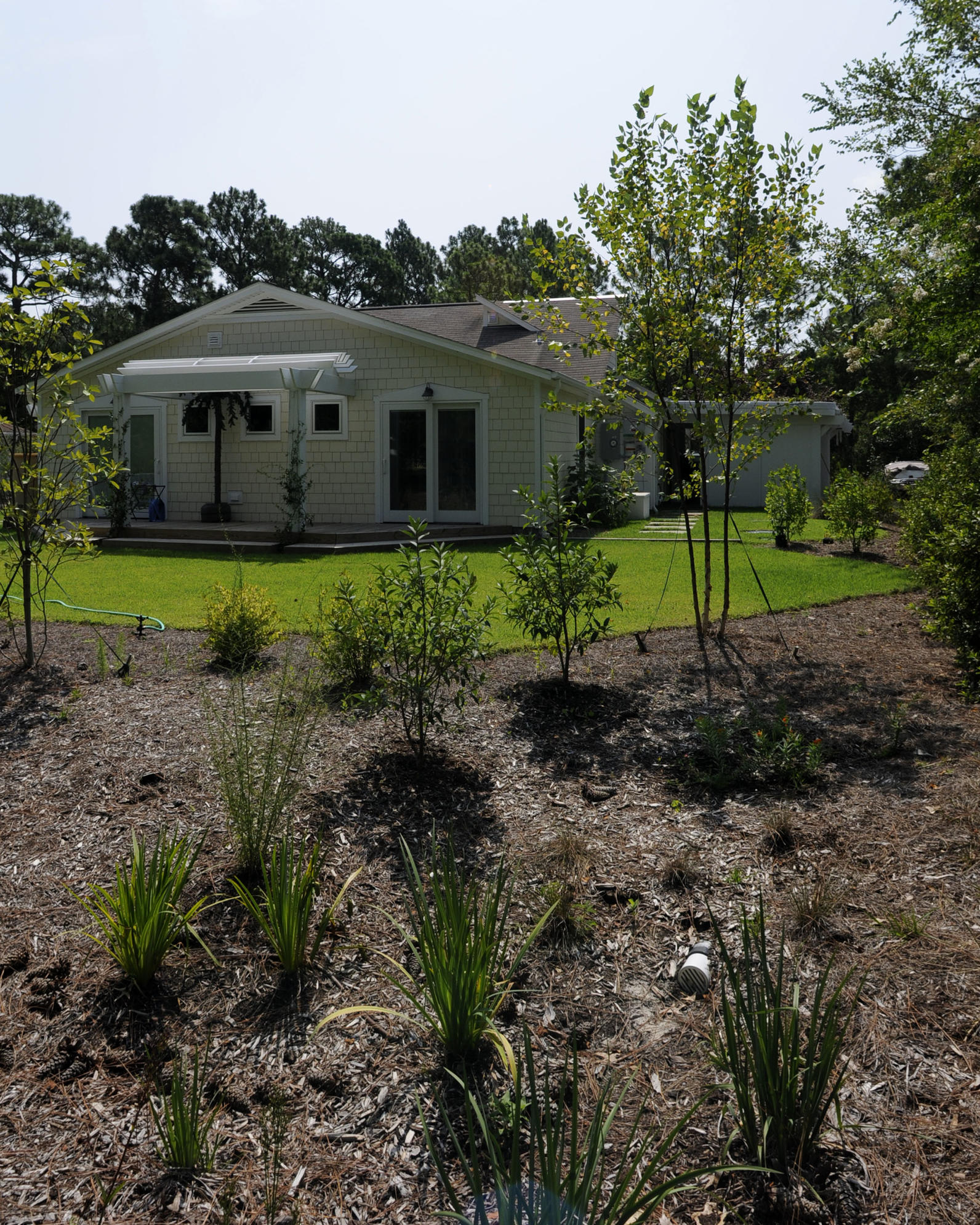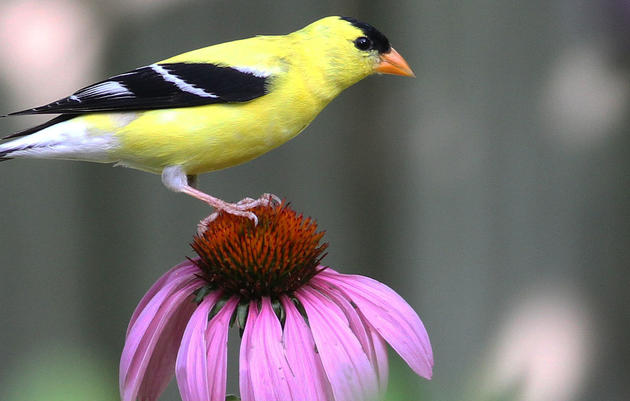Launched in 2013, Audubon North Carolina’s Bird-Friendly Communities initiative is a partnership program involving more than 20 organizations with a vision for creating a more bird-friendly North Carolina. This vision statement guides the goals and projects of the group: “Bird-friendly communities give birds the opportunity to succeed by providing connected habitat dominated by native plants, minimizing threats posed by the built environment, and engaging people of all ages and backgrounds in stewardship of nature.”
Please welcome guest-blogger Lara Berkley, member of Cape Fear Audubon Society, and a team member of Audubon North Carolina’s Bird-Friendly Communities program.
In this four-part series, learn from Wilmington-based landscape architect, Lara Berkley, how incorporating bird-friendly practices into architecture and landscape design can have a wide-reaching impact on the birds in your backyard and community at-large.
What inspired you to use bird-friendly practices?
Inspiration for bird-friendly design in our practice comes from a lifelong appreciation of nature, and its fascinating mutualisms and connectedness. We spend a lot of time outdoors, and keep binoculars next to our work area; it’s a great way to keep our computer work from becoming all-consuming. Animal-watching is infinitely more fun than drawing or taking phone calls, and it also gets us to be more tuned in to the natural world.
Here in the lower Cape Fear River watershed, there is a disconnect between appreciation for ‘plants and flowers,’ and appreciation for existing patches of awesome native habitat. Our region has a garden culture that tends (no pun intended!) to see the landscape as something to be managed and shaped, and this is not always to the benefit of birds, or any other creatures. Cape Fear Audubon has done an amazing job working with local garden groups and creating incentives to help shift this perspective. We’ve been happy to notice an increase in interest for bird-friendly practices in the garden.
Are bird-friendly practices a priority for you and your team?
Bird-friendly practices are definitely a priority for our practice. Bird-friendly equals sustainable, in our minds. We think about what the site and its surroundings have before we begin making design decisions. Careful site analysis means looking at hydrology, existing clusters of native vegetation, any presence of exotic invasive species, snags (dead trees are home to many kinds of birds and insects), and already-existing areas of disturbance. We look for ways the site can inform what can and can’t be done. Design decisions come from a combination of listening to the site and listening to our clients.
Although our fee comes from people, we feel a huge obligation to make sure there is room for non-human habitat, at any scale. Bird-friendly practices typically benefit people and other creatures, as well. We look for opportunities to keep and enhance existing layered native vegetation, provide natural sources of water, and accommodate on-site drainage to groundwater.
We prefer to use local natural materials for site features, and do this by minimizing site disturbance and looking for ways to recycle any trees (deadfall, benches or path mulch) that do need to be removed for buildings. A big part of the design process is future management of the landscape. The people that inhabit and use the landscape over time have to be on board with the idea of occasionally less-tidy-looking sites. If our clients understand habitat preservation, this is a straightforward process, but in many cases, we find ourselves promoting Doug Tallamy’s book, Bringing Nature Home, or in some cases, appealing to a client’s pocketbook to communicate the value and different methodologies of caring for habitat. Layered habitat does not have to ‘look unkempt,’ and sometimes, we employ creative mowing, fencing or signage strategies to demarcate areas of ‘habitat.’

How are you using bird-friendly practices in your projects and designs?
Bird-friendly practices that we use include ‘having a bird-brain’ during design. Does the site look like a nice and safe place to land from above?
We think about places for refuge, food sources that include larval host plants, seed-producing grasses, and fruit- and nut-producing plants. If we’re lucky enough to have a few large snags, we encourage our clients to keep those as well, in places where they are less likely to pose a danger. Water sources can include best-management practices like stormwater wetlands, or at the small, residential scale – birdbaths or gentle fountains. We ‘disconnect’ drainage, so that driveways, for instance, aren’t carrying pollutants into our waterways. We think about noise and other disturbance sources. We look for ways to ‘double or triple up’, so that a required buffer for noise abatement and visual screening also becomes a wonderful habitat patch or corridor.
We are always looking for connections, at all scales. If we can link some of the perimeter vegetated areas to adjacent ones, that’s even better! Instead of clearing a site and then re-landscaping, and providing feeders and birdhouses, we encourage clients to allow the birds to make their own homes by leaving those opportunities in place.
For buildings, there’s a fine balance in providing natural daylight and passive conditioning for building occupants, and lessening the likelihood of bird strikes. We talk with our clients about window placement, reflection-minimizing options, and reducing night lighting. Discussion of construction staging and landscape maintenance over time is a big part of our design process.
All too often, we have seen good intentions be destroyed by heavy equipment practices, and dumping of materials during construction, to post-occupancy damage, including severe pruning, and extreme applications of pesticides, herbicides, or even fertilizers.
Want to learn more on bird-friendly design? Stay tuned for the next installment: Why bird-friendly landscape architecture matters for cities and towns.
Lara Berkley is a NC-registered landscape architect, LEED-accredited professional, and partner with B+O: design studio, PLLC, in Wilmington, NC. She started B+O: design studio with her husband/partner, architect Scott Ogden, working in a variety of scales and project types, including design for educational/institutional, single-family, and commercial projects. Lara is currently co-chair of the North Carolina Native Plant Society SE Coast chapter, a member of Cape Fear Audubon Society, and a team member of Audubon North Carolina’s Bird-Friendly Communities program.
For more information about Audubon’s Bird-Friendly Communities program, visit our website.





